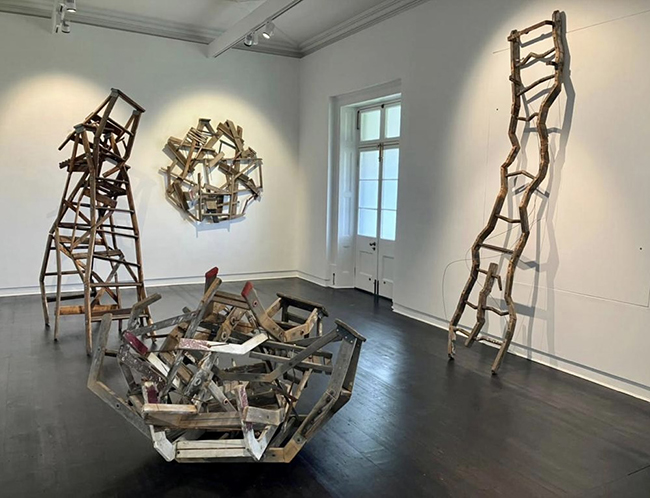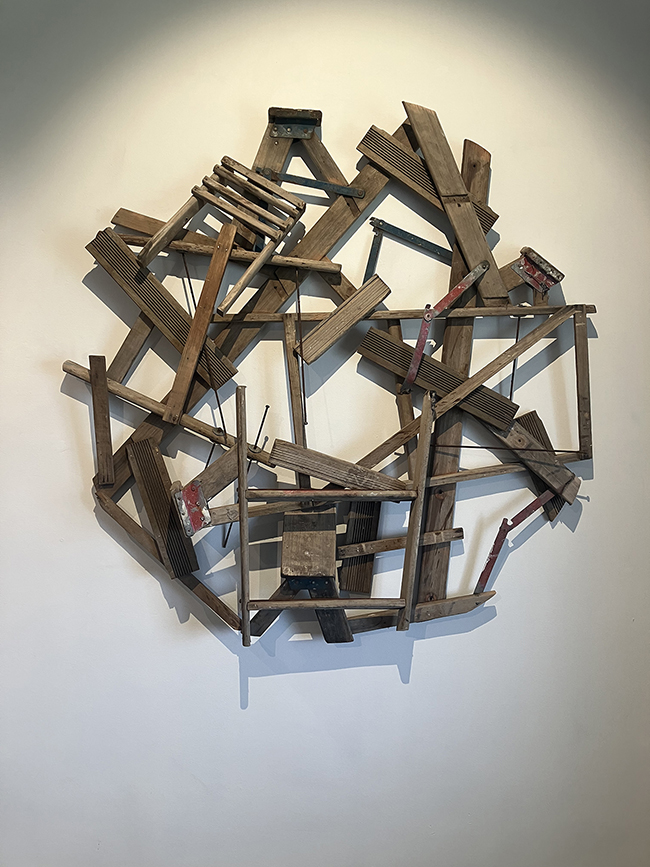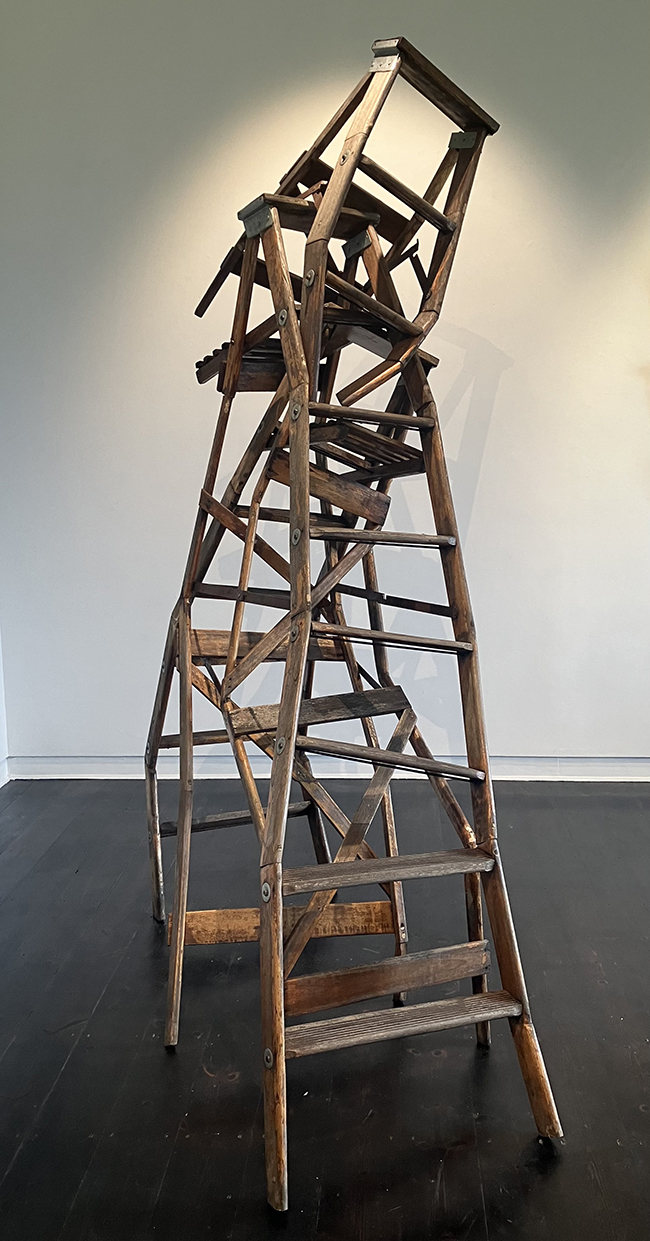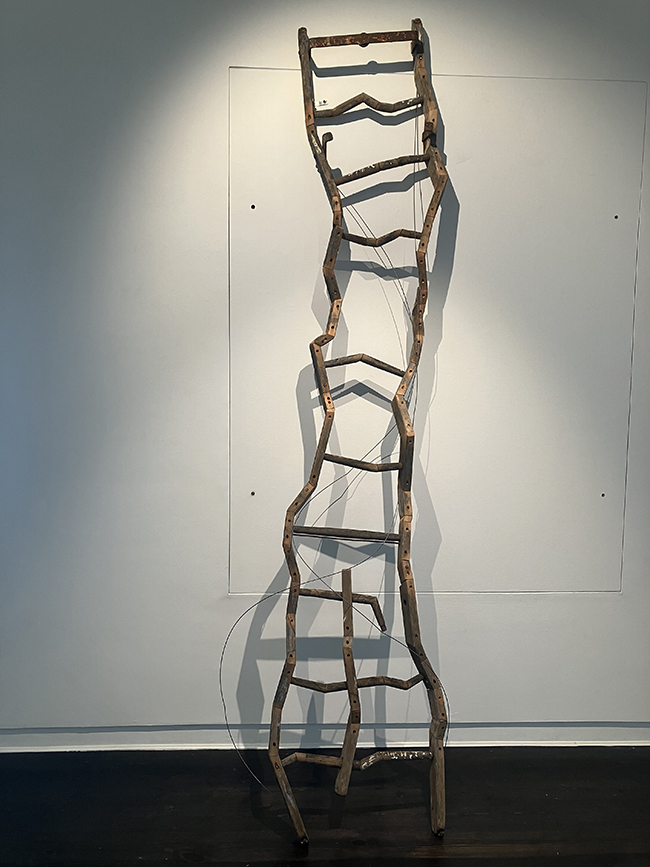Lynette Bester, a South African artist, has carved her niche with a distinctive approach to sculpture. Since completing her B.A. in F.A. in 1999 and earning an M.A. in F.A. (Cum Laude) in 2002 from the University of Stellenbosch, Bester has exhibited actively in Cape Town, Johannesburg, and beyond. Her works have featured in both local and international art competitions and residencies.

One of Bester’s intriguing pieces is titled “Bloom,” created in 2014 with dimensions measuring an impressive 3m x 2m x 1m. The medium she chose for this piece is unconventional yet symbolic – three newly purchased ladders. In her artist’s statement, Bester unveils the personal narrative embedded in “Bloom,” linking it to her experience of transitioning into motherhood amidst the challenges of a broken family.

Bester’s sculptural approach is unique, as she crafts her pieces from everyday objects, often sourced through online social media or word-of-mouth. This method introduces an element of unpredictability into her work, contributing to the accumulative nature of her sculptures. Her recent exhibition, “Situations” in 2022 at Everard Read CIRCA, Cape Town, exemplifies her ongoing exploration into the manipulation of the familiar form of the ladder.
In “Situations,” Bester delves into the complexities of the ladder as a symbol. The works titled “Bloom 2014,” “Knot 2017,” “Truth 2022,” and “Containment 2022” collectively form a series that explores the tensions described by Sigmund Freud in his 1920 work, “Beyond the Pleasure Principle.” Freud’s concept of “coming into being” through the interplay of destructive and constructive forces finds expression in Bester’s art. She recognizes violent and destructive behavior as an essential aspect of life affirmation.

Drawing inspiration from psychiatrist Karl Jaspers, Bester delves into the tension between triumph and failure, exploring the birth of something new from this struggle. Her chosen medium, the ladder, serves as a metaphor for ascension, symbolizing the human desire to reach greater heights. However, in the act of creating art, these ladders are destroyed, embodying the paradoxical nature of life – achieving while failing, building while destroying.
Bester’s work is a physical manifestation of the intricate dance between creation and destruction, reflecting her lived experiences. The ladders, while essential for ascension, are sacrificed in the process of making art. This intentional destruction becomes a testament to the artist’s journey, highlighting the simultaneous acts of building and dismantling that define the human experience.
In “Situations,” Bester invites viewers to contemplate the inherent tension in existence, prompting a deeper exploration of the delicate balance between creation and destruction. Her sculptures serve as powerful visual metaphors, resonating with those who engage with them on both a personal and intellectual level.

Lynette Bester’s artistic journey is a testament to her ability to transform ordinary objects into profound expressions of the human experience. Through her spartan yet conversational approach, she invites audiences to reflect on the complexities of life and the inherent contradictions that shape our existence. In Bester’s hands, the humble ladder becomes a potent symbol, inviting us to ascend even as we acknowledge the inevitable dismantling that accompanies the act of creation.

